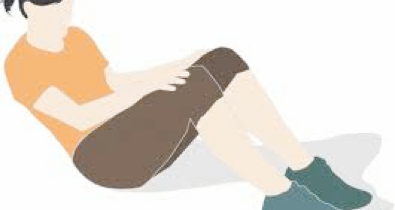When is it safe to start exercising after having a baby? What sort of exercises are best and how do I do them? Local Mums’ post-natal fitness expert Jo Cullen is on hand to help.

Are you a new mother? Congratulations!
If you have you recently given birth and are just wondering how to begin safely exercising to help your body come back to its pre-pregnancy condition, then read the article below! Have you heard that exercise might affect your milk and this has worried you?
Firstly, it is important to know that a group of hormones called ‘Relaxin’ are produced in early pregnancy to make the ligaments in the body elastic. Normally ligaments are relatively inelastic, which is necessary to maintain joint stability. But during pregnancy relaxin is produced in various amounts to help the body accommodate the growing baby. Production of relaxin, in these quantities, ceases after birth.
The effect of the ligaments becoming more supple and pliable means, for instance, that back problems can be made worse by excessive twisting and if you return to high impact or inappropriate exercise you can put your body at unnecessary risk of injury.
Why does the body produce relaxin?
The purpose of relaxin is to provide increased movement in the pelvis to accommodate the growing baby and to allow an easier birth. It also helps the abdominal muscles to stretch during pregnancy and the pelvic floor muscles to stretch during delivery.
Although relaxin is no longer manufactured in the postnatal period, the effects of the hormones on the ligaments are still evident. Relaxin has an effect on every joint in the body (even the little finger) and the effect on the joints lingers on until about five months post birth.
So what sort of things do I need to be aware of to avoid problems?
Gentle exercises can be commenced at home in the first few weeks after the birth.
Wait until you have had a satisfactory postnatal check-up before commencing more vigorous exercise.
If you had a caesarian delivery it is advisable to wait eight to ten weeks.
Wear a good supporting bra to protect the breasts when exercising.
Wear appropriate footwear for the activity.
If you are breastfeeding, feed before exercising.
Drink plenty of fluids before, during and after exercise.
Don’t exercise on an empty stomach.
Incorporate exercise into your daily activities as much as possible.
Swap your exercise session for a rest if you are feeling particularly tired.
The level of exercise must be comfortable and achievable.
Recognize when your body has had enough.
Stop immediately if pain is experienced or make adaptations if you feel uncomfortable. How do I regain (re-train) my pre-pregnancy posture.
Start pelvic floor exercises and some gentle abdominal exercises as soon as you can (for example, some pelvic tilts, static abdominal contractions, head and shoulder raises)
You may feel that the pelvic floor exercises don’t seem to do much, but they are really well worth doing, the more you do the stronger the muscles will get.
Start any exercise gradually, allowing yourself to build up over a number of weeks.
Always warm up the body before doing more exercises, have water handy to drink, especially if you are breastfeeding and always stop when you feel your body has had enough.
Try and take the baby for a walk in the pram or carry papoose and ‘power’ walk till you feel warm and your breathing is a little faster than normal.
Pull in your deep tummy muscles (called transversus muscles) whenever you think about them - when walking along, when driving and stopping at the traffic lights, whenever you feed your baby.
Structured exercise may take many forms – swimming, walking, postnatal exercise class. But it is a good idea to leave anything that creates ‘impact’ on your body until you are at least five months postnatal. Impact can be defined as taking both feet off the floor at the same time.
If you can get to a specific postnatal exercise class you will meet other mothers with babies of the same age and you will probably find you have things in common. The class can be a really great way to meet others and develop new friendships at this time, especially if you can take your baby along too and afterwards go for a coffee in the cafe.
Look on the Guild of postnatal exercise instructors website to find a qualified teacher or personal trainer near you. Most of these exercise teachers run classes specially for mothers and babies.
If you cannot find a class near you, investigate a ‘ low impact’ class, arrive early and let the teacher know you have just had a baby. He or she should encourage you not to jump, bounce or use jerky movements or work harder than you are really ready to do and build up your strength gradually. If you feel pressured into working too hard you can do damage so do not overdo it!
Don’t work into any sort of pain. Pain is a warning signal that should never be ignored. Make adaptations or stop altogether.
Abdominal Muscle Separation – Is this normal?
Under the influence of relaxin the abdominal muscles undergo a tremendous amount of stretching in all directions. Sometimes the mid-line separates to allow more space for the growing uterus. This is known as diastasis recti – separation of the recti muscles and in quite common, occurring in 66% of women in the third trimester. It is not painful in itself, but can result in backache, and does not look too attractive!
What is the best exercise to regain tummy strength?
Transversus Abdominal Exercise / Tummy retraction. Here is a sample exercise:
Preparation: Kneel on your hands and knees with knees under hips, hands under shoulders and fingers facing forwards. Keep the back flat and the neck long.
Action: Breathe out and pull in the tummy muscles, lifting your abdomen up towards your spine. Keep the elbows slightly bent to prevent them locking. Hold for a count of six, continuing to breathe. Lower with control to the starting position, taking care not to let the back arch.
Repeat eight times.
This exercise can also be carried out sitting or standing in everyday contexts.
When it comes to the abdominal work, stick to static transversus tightening, classic rectus abdominal work (with transversus tightening) and work on all fours until you are sure your rectus abdominal muscles have come back together.
Leave out oblique muscle exercises until you are sure your abdominal muscle separation has come back to ‘less than two fingers’.
You can ask your midwife, physiotherapist or your postnatal exercise teacher to show you how to check on these muscles.
Remember, the best course is to attend classes given by qualified teachers such as those given by members of the Guild, YMCA, or Fitness Professionals. Ask if your teacher is qualified to teach postnatal exercise if you are not sure.
I teach Legs, Bums and Mums and teaches buggy classes all over the South East:
All classes take place within your local parks, incorporating different types of exercise designed to help you get back to your old self & it’s a great place to meet new friends and introduce your baby to some new pals too.
Included in this are walking at varying paces to warm up, stretching, followed by faster cardio work-outs for Mums with babies over 5 months old and walking at different paces for those Mums with younger babies.
This is followed by strength and toning exercises including squats & lunges & the use of different levels of resistance bands to increase the difficulty of the exercises. We also use our buggies during this part of the class and the babies can get involved too, they love to clap along while we are counting our sets!! We are aiming to improve muscle tone and strengthen our lower and upper body.
The class concludes with abdominal work-outs with your mats, here we aim to work all the core abdominal muscles with fast and slow exercises, incorporating Pilates style exercises and you will even have alittle homework.
Lastly we ensure that each muscle group is stretched out accordingly and try to finish with the all important pelvic floor muscles.
All exercises are designed with Mums in mind & relate specifically to targeting those areas affected by childbirth. We are aiming to improve our fitness and burn fat in a safe and effective way.
Please be aware that although it is lovely to have your babies involved in the class - you must NOT exercise with your baby in your arms or run with your baby in the buggy during the class. This is dangerous and risks injury both to you and your baby. If you wish to engage in any exercises that incorporate such moves - please do so in your own time.
Also, it is extremely important that we exercise ourselves in a safe and effective way following the birth of children. The effect of relaxin on our ligaments during pregnancy means that we can be more supple and pliable and if you return to high impact or inappropriate exercise too early you can put your body at unnecessary risk of injury.
When you begin your course with Legs, Bums and Mums your sessions will be specifically designed with you in mind, the age of your baby and any health concerns (or areas of concern) you may have. This will ensure that you are getting the best workout for you and are able to achieve your fitness goals.
For more information, contact Jo on 07818 036662
or visit www.legsbumsandmums.pwp.blueyonder.co.uk
This article was first published on www.carshaltonmums.com
